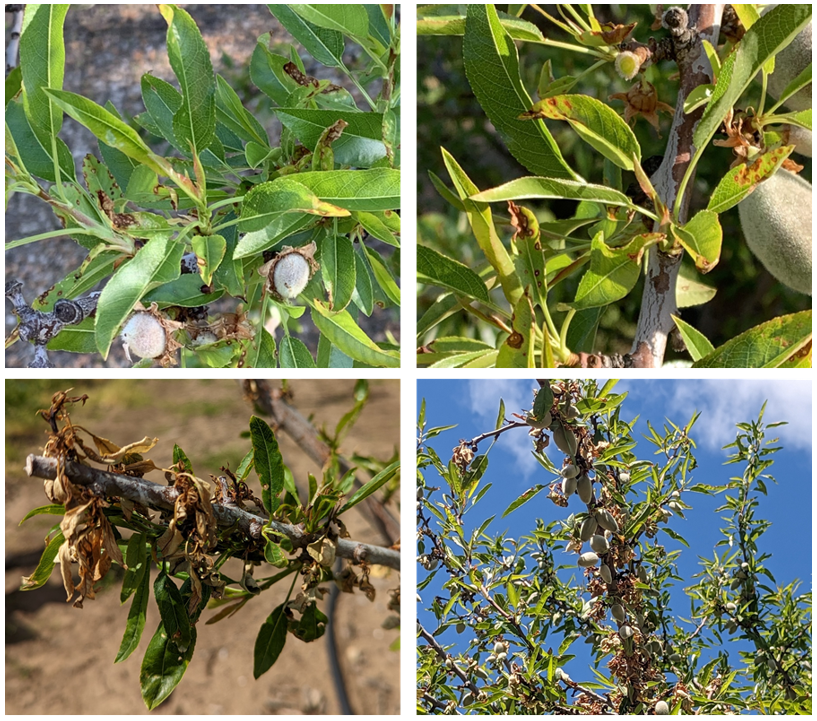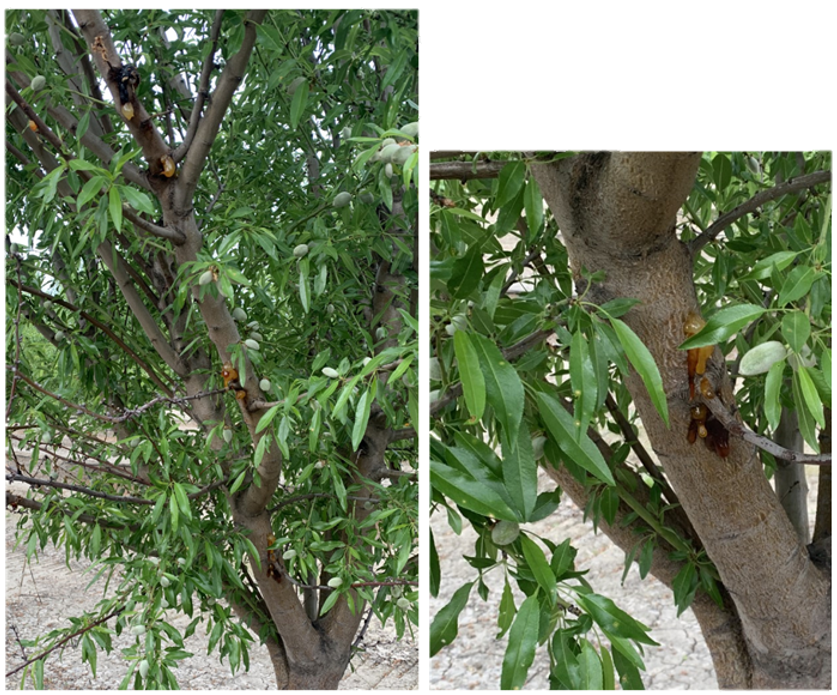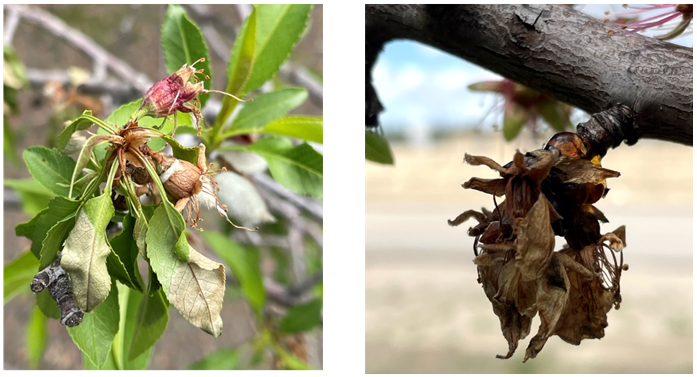Jaime Ott, UCCE Tehama, Shasta, Glenn, and Butte Counties
Franz Niederholzer, UCCE Colusa, Sutter, Yuba Counties
Mohammad Yaghmour, UCCE Kern County
With our chilly winter, many growers, managers, and PCAs were finding outbreaks of bacterial blast in their almonds this spring. Blast, which is caused by the bacterium Pseudomonas syringae, is normally seen affecting flowers and leafy spurs exposed to cold, wet weather. Blast is a challenging disease to control, given the limited number of available tools. This year, symptoms were common even in orchards which had received one or more copper dormant sprays (copper-resistant Pseudomonas populations are common throughout the state). Kasumin is also available and effective for blast control, but is expensive and can be cost prohibitive, especially if prolonged wet weather necessitates repeated applications. This leaves temperature/frost control in an orchard as your least expensive and most effective blast prevention strategy.

Independence on Hansen (top), Independence on Viking (bottom left), Nonpareil on Krymsk (bottom right). Spotted and misshapen leaves, dead leaf bundles, dead flowers, and aborted nuts were all common symptoms of bacterial blast this year.




Leave a Reply